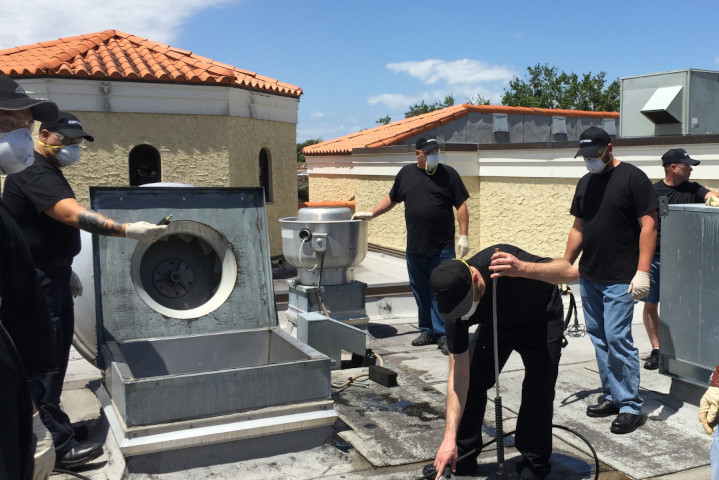Exhaust Fan Belt & Bearing Maintenance
Refers to the regular inspection, adjustment, lubrication, and replacement of the belts and bearings inside a commercial kitchen’s exhaust fan system. These components are essential for ensuring proper ventilation by keeping the exhaust fan operating smoothly and efficiently.

🔧 What Are the Belts and Bearings?
✅ Exhaust Fan Belt
A fan belt connects the motor to the fan blades (usually through pulleys).
It transfers the motor’s rotational power to spin the fan and remove hot air, smoke, and grease-laden vapors from the kitchen.
✅ Exhaust Fan Bearings
Bearings allow the fan shaft or blower wheel to rotate smoothly with minimal friction.
They are found at pivot or rotation points within the motor and fan assembly.
⚙️ Why Maintenance Is Important
Belt failure leads to fan stoppage or reduced airflow.
Worn bearings can cause noise, vibration, overheating, and eventual motor failure.
Lack of maintenance can result in:
Fire hazards
Downtime and repair costs
Poor ventilation and code violations
🔍 Common Maintenance Tasks
🛠️ For Fan Belts
Inspect for wear and cracks — Look for fraying, glazing, or splitting.
Check belt tension — Too loose = slipping; too tight = motor damage.
Align pulleys — Misalignment causes uneven wear.
Replace if worn — Typically every 6–12 months in busy restaurants.
🛠️ For Fan Bearings
Listen for unusual noises — Squeaking or grinding indicates issues.
Check for vibration — Excess movement can mean bearing wear.
Lubricate regularly — Use manufacturer-recommended grease/oil.
Replace if damaged — Worn bearings can overheat and seize up.
📅 Recommended Maintenance Schedule
Monthly Visual Inspection
Quarterly Belt Adjustment
Biannual Lubrication of Bearings
Annual Belt Replacement (or sooner based on use)
🛑 Signs Maintenance Is Overdue
Loud or rattling fan noises
Reduced airflow or suction
Burning smell near the fan motor
Fan not turning on or running erratically
✅ Summary
Exhaust Fan Belt and Bearing Maintenance is critical to keeping your commercial kitchen’s ventilation system running safely and efficiently. Regular checks, adjustments, lubrication, and timely replacements help prevent system failure, reduce fire risk, and ensure compliance with health and safety regulations.
